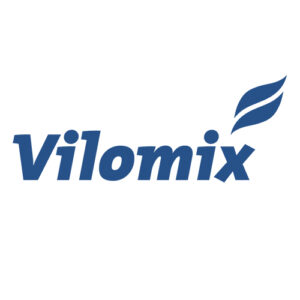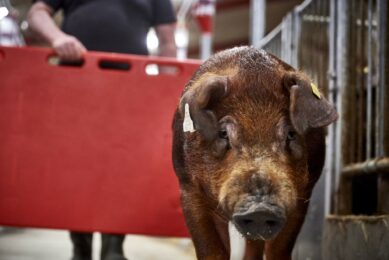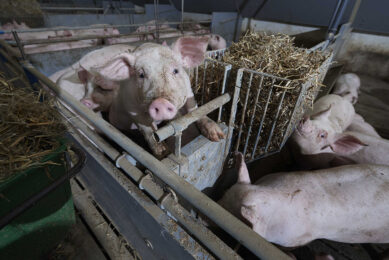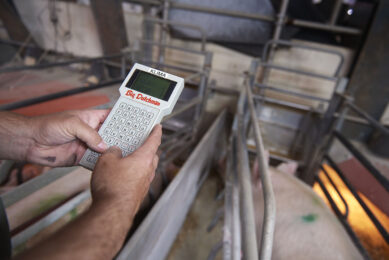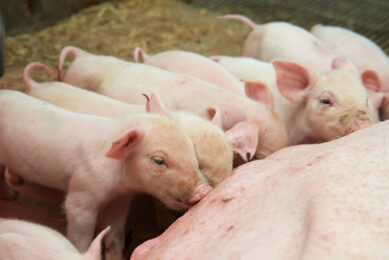Raising healthy piglets in the post-weaning phase
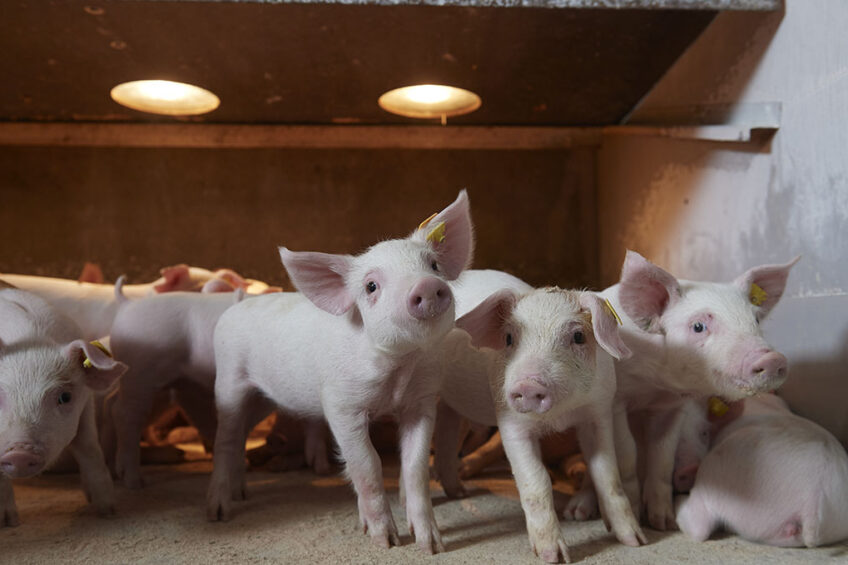
Fresh feed, plenty of water and a warm, clean barn are key factors for the uniform, cost-efficient growth of pigs.
Weaning is a critical period in piglet production where the goal is to produce healthy and uniform pigs with high growth, low feed conversion and low use of medicine. In the growth phase up to 30kg (Figure 1), producers look to satisfy the animals’ needs for nutrients and energy with a particular focus on minimising costs.
The first step to optimum growth and productivity is to move the piglets to a warm, clean, and dry barn and provide dry feed, porridge, or milk soup to optimise feed intake. For the best possible feed conversion, the taste, structure, and freshness of the feed are all key factors.
From an overall quality perspective, care should also be taken to ensure the feed is free of unwanted substances such as mycotoxins.
Figure 1 – Approximate growth chart of piglets up to 30kg

A typical dry feeding system is based on 2-3 mixes plus an optional special feed with additional milk for piglets with a low weaning weight. At Vilomix, we recommend that pig producers follow the current nutrient standards and comply with the indicative inclusion percentages (Table 1).
Recommendations for the ideal feed
The pre-starter mix should be given immediately before and until around 2 weeks after weaning, ideally containing easily digestible ingredients that support the development of the intestine and minimise stress on the intestinal wall. Soya protein concentrate, fish meal, milk products, blood plasma, potato protein and heat-treated grains are good raw materials for this purpose.
For piglets from 9-15kg, the mix should contain a maximum of 15% soybean meal and 3-4% fish meal or another highly digestible protein source, avoiding rape and sunflower seed. From 15-30kg, the ideal feed composition is a maximum of 22% soybean meal and preferably 1% fishmeal or potato protein. Alternative protein sources, including sunflower, rapeseed and pea, may be introduced at this stage.
As high dosages of zinc oxide are no longer permitted, the use of additives is important to support piglet health and maximise feed utilisation. Organic acids*, for example, are very effective against harmful microorganisms and provide better conditions for beneficial microflora. The right dosage and combination of acids are key to their effect.
Changes in the feed mix can cause diarrhoea in weaned piglets. For this reason, it is important to make a gradual shift to each new mix over the course of a week. During the first week after weaning, a good feeding strategy is to maintain feed intake at 150g a day first 3 days, gradually increasing intake towards the end of the week. Ad libitum feed can be given from week 2.
Water consumption also increases from 1-2 litres per piglet daily after weaning to 5 litres when they reach 30kg. Before piglets are transferred to the facility, it is important to check the fresh water output of the drinking system and its capacity for meeting the needs of the entire piglet herd.
6 tips for good feed intake
- Give piglets the same feed mix before and after weaning. Provide dry food, possibly on the floor, once a day for the first three days.
- Change the feed mix gradually according to piglet size and weight rather than age.
- Give piglets easy access to feed and keep feed fresh by making sure automatic dispensers are emptied at least once a day.
- Clean the feed dispensers regularly and check the settings to ensure they release sufficient feed to meet piglet needs without creating feed waste
- Leave the lights on for at least 16 hours a day to even out use of the dispensers, reducing agitation and enabling low-ranking pigs to get enough feed
- Provide sufficient water, i.e. one water nipple for every 10 pigs or one water cup for every 15 pigs with a minimum output of 1 litre/minute.
*Read more about Vilomix’s organic acids, called the BioPro-series, here.


